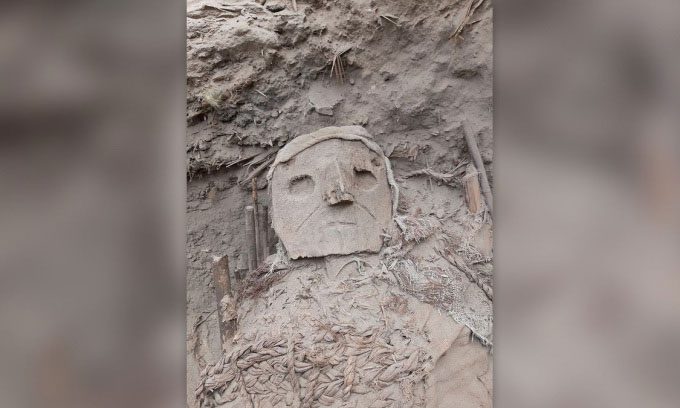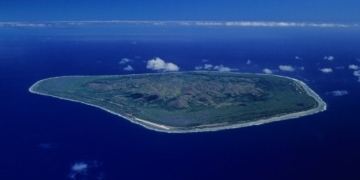The mummies were wrapped in cloth and rope, with some adorned with wooden and ceramic masks known as “death masks.”

A carved mask on a mummy. (Photo: PUCP Archaeology Program Valley of Pachacamac).
Archaeologists have excavated the tombs of at least 73 individuals who lived around 1,000 years ago, several hundred years before the Inca dominated much of western South America, Live Science reported on November 28. All 73 mummies were wrapped in cloth, with some using multicolored fabrics and ropes. Some wore masks made of wood and ceramics, referred to as “death masks”, according to Krzysztof Makowski, the lead archaeologist from the Pontifical Catholic University of Peru. The team also discovered colorful ceramics in several of the tombs.
The newly discovered mummies are located at the Pachacamac archaeological site, associated with the Wari culture, near Lima, Peru. They were buried near the Painted Temple around the years 800 to 1100, during the period when the Wari Empire was expanding in this region.
The Wari are renowned for their well-preserved mummies and intricate artworks, including elaborate ceramics and textiles. They also practiced human sacrifice and used hallucinogens in their religious ceremonies.
In addition to the 73 mummies, archaeologists found two wooden staffs at the ruins of a nearby settlement. These staffs were located among spiny oyster shells (Spondylus princeps) imported from what is now Ecuador, north of the Wari Empire. Each staff features complex carvings.
Experts are continuing their excavation efforts at Pachacamac and analyzing the mummies. In the Quechua language spoken by the indigenous people of the Andes, Pachacamac means “the one who brings life to the Earth.” Archaeological studies indicate that Pachacamac was a relatively modest settlement during the Wari period but later flourished during the Inca era, becoming an important religious worship site in the 15th century.


















































